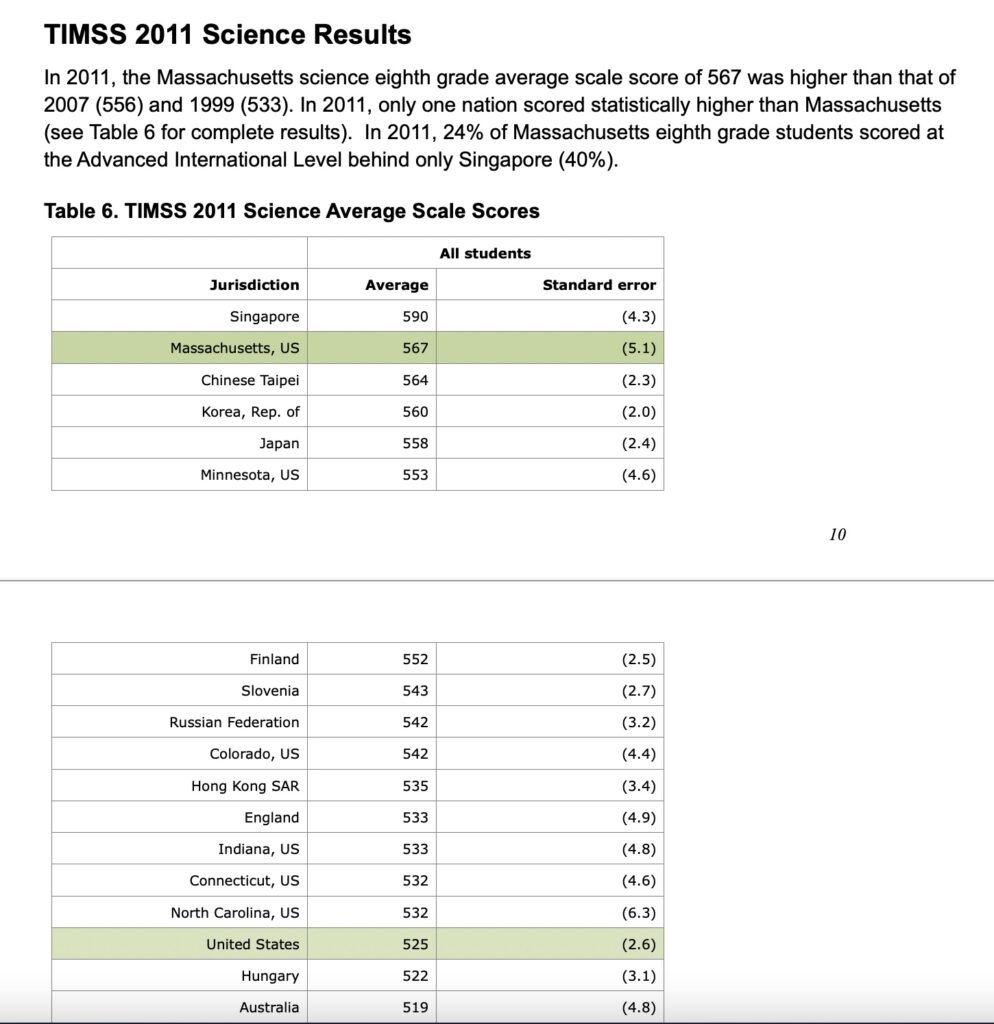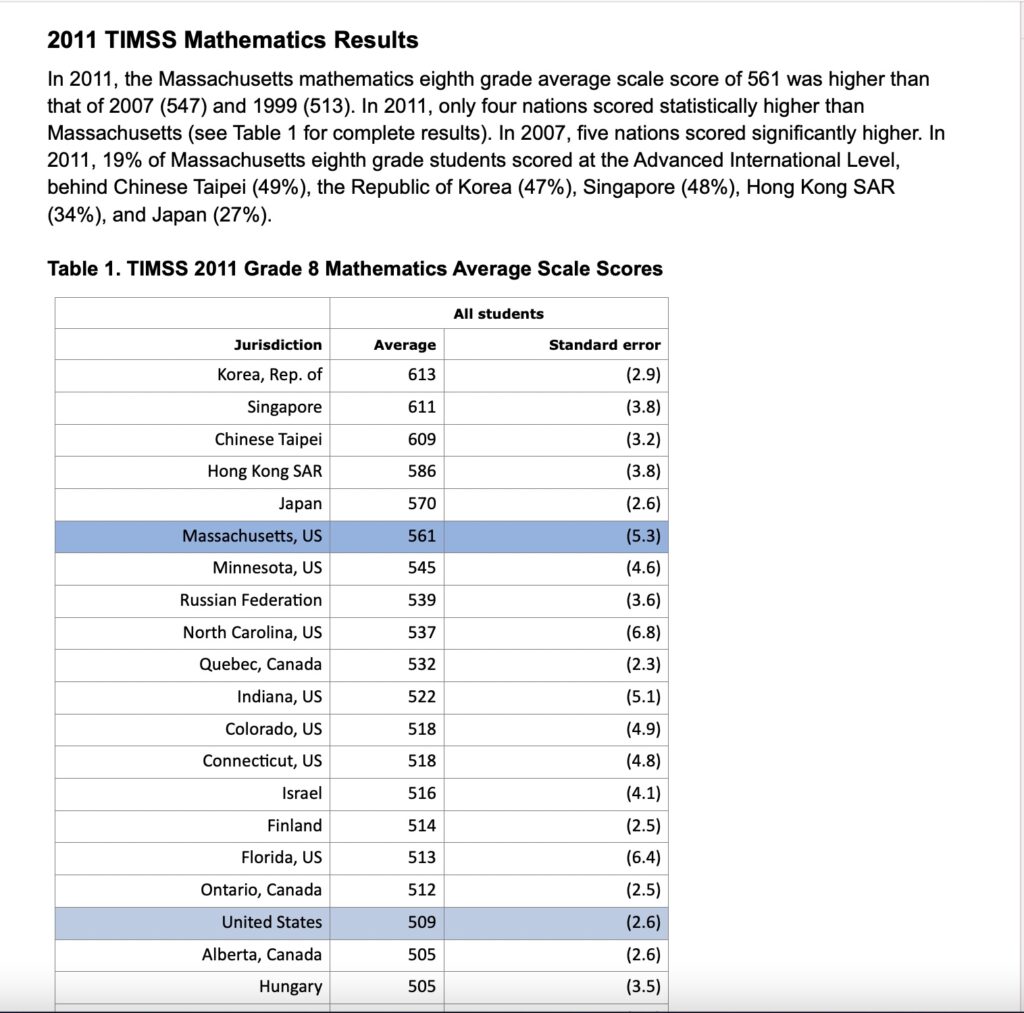Dear Superintendent Nadeau:
I wanted to share an article from Joanne Jacobs: Core Knowledge Students Learn More–A Lot More. As you can see, “Students taught a structured, knowledge-rich curriculum starting in kindergarten earned higher reading, math, and science scores in third through sixth grade, concludes a new study profiled in “Education Next.”
Someone should be identifying what is covered in each core subject K-8 and compare that to the Core Knowledge Scope and Sequence. Making a comparison between what is covered in class and what is not taught could identify knowledge gaps in our students. There is a great deal of rich content that needs to be covered in each of the core classes. Teachers find it helpful to be able to draw upon the resources offered in the Core Knowledge Scope and Sequence. That document can certainly be tweaked by teachers who may want to make it even better.
We also know that Common Core and Next Generation Science, failed to improve literacy for U.S. Students. After 14 years of this experiment, school administrators need to be finding ways to make up for these deficiencies.
We were told Common Core was the floor and that it was the minimum that students should be learning. I think our students deserve better.
I hope that under your direction, the principals in SAU21 can begin the important process of comparing the Core Knowledge Scope and Sequence, with what is taught in the K-8 classrooms. Adding content might be a good idea, especially since we know Common Core math leaves out important math concepts.
Here, the lead writer of Common Core, Jason Zimba talks about how Common Core is not for STEM (Science Technology, Engineering and Mathematics) programs. Parents need to know that this district has addressed the numerous problems and flaws, and is raising the bar for our students.
While the scope and sequence do not identify Algebra 1 by 8th grade, this should be a goal for every elementary school in the district.
Any math program adopted (k-8) should put students on a path to Algebra 1 by 8th grade. This will allow our students to complete Calculus in high school, which is a requirement of Engineering, Math, and Science programs at our top colleges and universities. This may not be attainable for all students, but the majority of students should be completing Algebra 1 by 8th grade. This was required in states like California and Massachusetts prior to the adoption of Common Core.
The questions every school board member should be asking are:
1) How many students reach Algebra 1 by 8th grade?
2) How many students graduate from Winnacunnet High School in need of remedial math when entering college?
The last statistic may not be readily available. After the adoption of Common Core, many colleges and universities changed their remedial math classes to credit-bearing classes. It is now harder for us to determine what percentage of students require remedial math after entering college. You can start with the New Hampshire Department of Education and request this statistic. It’s one of the most important measures you and the board members should analyze each year.
Do the 8th-grade students take the TIMSS test every four years?
I’ve worked with some of our top mathematicians in the U.S., and all have agreed, the TIMSS is the best achievement test for math and science. Unfortunately the test is only given every four years, but it will compare our students to students in Singapore, Japan and the other countries that participate. This test should be given to all 4th and 8th-grade students in our district every four years.
Prior to Common Core, Massachusetts students were finishing near the top on the TIMSS. Their students could compete against students in the top performing countries. They had developed the best academic standards and tests in the country.
Do we administer the TIMSS test in this district? If not, I hope that this will be a priority for you and the School Board members currently serving.
Finally, I agree that having future teachers intern could be a way to expand the labor pool. Hopefully, that will help the district hire and retain good teachers.
Sincerely,
Ann Marie Banfield


